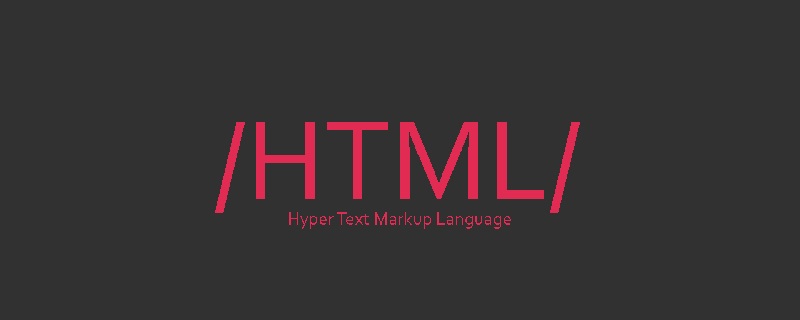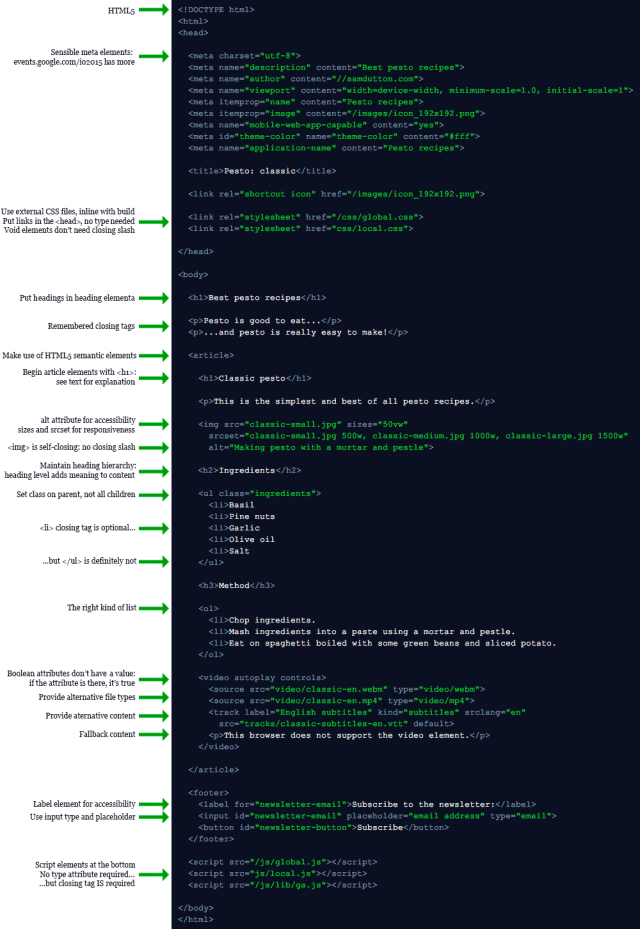Some HTML optimization tips you should know

How to improve the performance of Web pages, many developers start from many aspects, such as JavaScript, image optimization, server configuration, file compression or adjusting CSS. It's clear that HTML has reached a bottleneck, even though it is the core language necessary for developing Web interfaces. The load of HTML pages is also getting heavier and heavier. Most pages require an average of 40K of space. For example, some large websites contain thousands of HTML elements, and the page size will be larger.
How to effectively reduce the complexity of HTML code and the number of page elements. This article mainly solves this problem. It introduces how to write concise and clear HTML code from many aspects, which can make the page load faster. , and can run well on a variety of devices.
The following principles need to be followed during the design and development process:
Structural separation: Use HTML to add structure, not style content;
Keep it tidy: Add code validation tools to your workflow; use tools or style wizards to maintain code structure and format
Learn a new language: Get element structure and semantic markup.
Ensure accessibility: Use ARIA attributes and Fallback attributes, etc.
Test: Make the website run well on multiple devices and can be used emulators and performance tools.

##The relationship between HTML, CSS and JavaScript
HTML is used to adjust the page structure and The content's markup language. HTML cannot be used to modify style content, nor can you enter text content in the header tag, making the code lengthy and complex. Instead, it is more appropriate to use CSS to modify layout elements and appearance. The default appearance of HTML elements is defined by the browser's default style sheet. For example, in Chrome, the h1 tag element will be rendered into a 32px Times bold font. Three general design rules:- Use HTML to construct the page structure, CSS to modify the page presentation, and JavaScript to implement the page function. CSS ZenGarden demonstrates behavioral separation very well.
- If it can be achieved with CSS or JavaScript, use less HTML code.
- Store CSS and JavaScript files separately from HTML. This can help with caching and debugging.
The document structure can also be optimized, as follows:
Use the HTML5 document type, the following is an empty file:<!DOCTYPE html> <html> <head> <title>Recipes: pesto</title> </head> <body> <h1>Pesto</h1> <p>Pesto is good!</p> </body> </html>
<head> <title>My pesto recipe</title> <link rel="stylesheet" href="/css/global.css"> <link rel="stylesheet" href="css/local.css"> </head>
<body> ... <script src="/js/global.js"> <script src="js/local.js"> </body>
<head> ... <script src="js/local.js"> </head> <body onload="init()"> ... <button onclick="handleFoo()">Foo</button> ... </body>
index.html:
<head> ... </head> <body> ... <button id="foo">Foo</button> ... <script src="js/local.js"> </body>
init();
var fooButton =
document.querySelector('#foo');
fooButton.onclick = handleFoo();Verification
One way to optimize a web page is that the browser can Handle illegal HTML code. Legal HTML code is easy to debug, takes up less memory, consumes less resources, is easy to parse, renders and runs faster. Illegal HTML code makes it extremely difficult to implement responsive design. When using templates, legal HTML code is extremely important. It often happens that templates run well alone but report various errors when integrated with other modules. Therefore, the quality of HTML code must be ensured. , you can take the following measures:- Add validation functionality to your workflow: Use validation plug-ins such as HTMLHint or SublineLinter to help you detect code errors.
- Use HTML5 document type
- Ensure that the hierarchical structure of HTML is easy to maintain and avoid nesting elements in a left-open state.
- Make sure to add the closing tag of each element.
- Remove unnecessary code; there is no need to add closing tags for self-closing elements; Boolean attributes do not need to be assigned a value, if they exist, they are True;
Code format
Format consistency makes HTML code easy to read, understand, optimize, and debug.Semantic tags
Semantic refers to things related to meaning. HTML can see semantics from the content of the page: the naming of elements and attributes expresses the role of the content to a certain extent. and function. HTML5 introduces new semantic elements such as
Hot AI Tools

Undresser.AI Undress
AI-powered app for creating realistic nude photos

AI Clothes Remover
Online AI tool for removing clothes from photos.

Undress AI Tool
Undress images for free

Clothoff.io
AI clothes remover

Video Face Swap
Swap faces in any video effortlessly with our completely free AI face swap tool!

Hot Article

Hot Tools

Notepad++7.3.1
Easy-to-use and free code editor

SublimeText3 Chinese version
Chinese version, very easy to use

Zend Studio 13.0.1
Powerful PHP integrated development environment

Dreamweaver CS6
Visual web development tools

SublimeText3 Mac version
God-level code editing software (SublimeText3)

Hot Topics
 1664
1664
 14
14
 1422
1422
 52
52
 1316
1316
 25
25
 1267
1267
 29
29
 1239
1239
 24
24
 Table Border in HTML
Sep 04, 2024 pm 04:49 PM
Table Border in HTML
Sep 04, 2024 pm 04:49 PM
Guide to Table Border in HTML. Here we discuss multiple ways for defining table-border with examples of the Table Border in HTML.
 Nested Table in HTML
Sep 04, 2024 pm 04:49 PM
Nested Table in HTML
Sep 04, 2024 pm 04:49 PM
This is a guide to Nested Table in HTML. Here we discuss how to create a table within the table along with the respective examples.
 HTML margin-left
Sep 04, 2024 pm 04:48 PM
HTML margin-left
Sep 04, 2024 pm 04:48 PM
Guide to HTML margin-left. Here we discuss a brief overview on HTML margin-left and its Examples along with its Code Implementation.
 HTML Table Layout
Sep 04, 2024 pm 04:54 PM
HTML Table Layout
Sep 04, 2024 pm 04:54 PM
Guide to HTML Table Layout. Here we discuss the Values of HTML Table Layout along with the examples and outputs n detail.
 HTML Input Placeholder
Sep 04, 2024 pm 04:54 PM
HTML Input Placeholder
Sep 04, 2024 pm 04:54 PM
Guide to HTML Input Placeholder. Here we discuss the Examples of HTML Input Placeholder along with the codes and outputs.
 How do you parse and process HTML/XML in PHP?
Feb 07, 2025 am 11:57 AM
How do you parse and process HTML/XML in PHP?
Feb 07, 2025 am 11:57 AM
This tutorial demonstrates how to efficiently process XML documents using PHP. XML (eXtensible Markup Language) is a versatile text-based markup language designed for both human readability and machine parsing. It's commonly used for data storage an
 HTML Ordered List
Sep 04, 2024 pm 04:43 PM
HTML Ordered List
Sep 04, 2024 pm 04:43 PM
Guide to the HTML Ordered List. Here we also discuss introduction of HTML Ordered list and types along with their example respectively
 HTML onclick Button
Sep 04, 2024 pm 04:49 PM
HTML onclick Button
Sep 04, 2024 pm 04:49 PM
Guide to HTML onclick Button. Here we discuss their introduction, working, examples and onclick Event in various events respectively.




